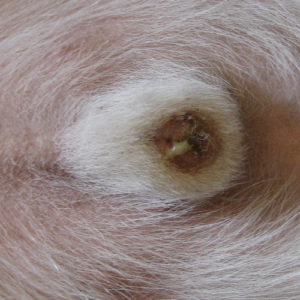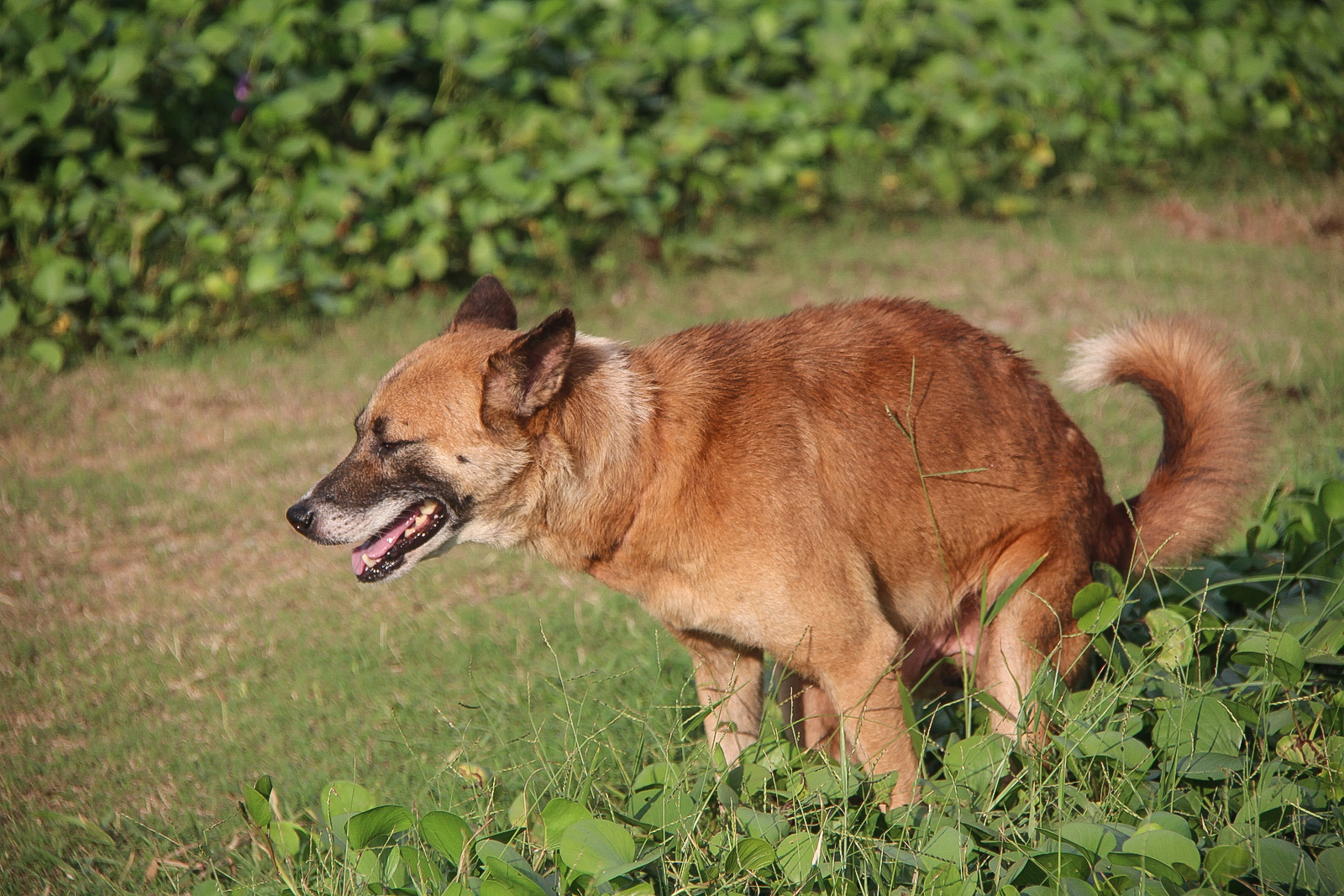Last Updated on November 4, 2023
Dog penis infection is a common problem among male dogs who are not neutered. Also known as Balanoposthitis, dog penis infection can cause mating problems and infertility issues to the dog. In recent years, circumcision for these dogs may be a possible solution to this.
What Causes Dog Penis Infection

Balanoposthitis is the medical term for dog penis infection, which is the inflammation of the penis and the prepuce. It can occur in dogs over a big range, and can be caused by mainly bacterial infections , Phimosis or even injuries. In worst cases, it can be caused by cancerous tumors. Poor hygiene can also lead to dog penis infection.
Indeed, there are many possible causes of an infection at the penis in dogs. From bacteria or yeast overgrowth to allergies, or even hormonal imbalances, let us investigate further and perhaps you can find information that can be of use to you.
- Bacterial infections: Bacteria such as Staphylococcus and Escherichia coli can cause infections of the penis. These bacteria are commonly found on the skin and in the environment, but can cause infections if they enter the body through a break in the skin or through the urethra. Bacterial infections can cause symptoms such as redness, swelling, discharge, and a foul odor.
- Yeast infections: Yeast overgrowth can lead to an infection at the penis. Yeast is a type of fungus that is commonly found on the skin. Yeast infections can cause symptoms such as itching, redness, and a thick, white discharge.
- Allergies: Allergies to food, environmental allergens or flea bites may cause inflammation and itching of the penis. This can lead to licking and scratching of the area, which can cause further irritation and increase the risk of infection.
- Hormonal imbalances: Hormonal imbalances, such as low levels of testosterone, can cause infections of the penis. Hormonal imbalances can cause changes in the skin, making it more susceptible to infections.
- Trauma: Injuries or trauma to the penis can lead to infection. Trauma can happen from fighting with other animals or from getting caught in something.
- Foreign objects: Objects such as sticks or grass awns can get stuck in the penis, leading to infection. These foreign objects can cause irritation and inflammation, and can also introduce bacteria into the area, increasing the risk of infection.
- Neoplasia: Tumors or abnormal growths in the penis can cause an infection. These growths can cause irritation and inflammation, and may also be a source of bleeding.
- Immune-mediated disorder: Some dogs may develop an immune-mediated disorder that can cause inflammation of the penis. In this case, the immune system mistakenly attacks the body’s own tissues. This can cause redness, swelling, and discomfort in the affected area.
Now that we know some of the reasons that cause your dog to have an infection at his penis, let us look at the symptoms of the infection.
Symptoms of Dog Penis Infection
If your dog exhibits the following behavior, then it might be suffering from Balanoposthitis.
- Discomfort while trying to pee
- Swelling of the area around the penis
- Bloody discharge from the are around the penis or prepuce
- Yellowish discharge from the tip of the penis
- Foul odor from discharge
- No interest in mating
- A sudden change in behavior, especially in active dogs
- Dog constantly lick penile area
If you see the above signs, please do visit the veterinarian. The vet will administer antibiotics to you depending on the type of infection. If the situation calls for it, the vet might want the dog to undergo tests to determine the severity of the problem. Usually, the situation shouldn’t be too serious. The vet will eventually recommend neutering the dog, but that is entirely up to the owner’s discretion.
Treatment Options:
The treatment for a dog penis infection may vary depending on the cause. Common treatment options include:
- Antibiotics:
- If the veterinarian determines that the infection is caused by bacteria, they will prescribe antibiotics. The choice of antibiotic and the duration of the treatment will depend on the specific type of bacteria and the severity of the infection.
- It’s crucial to administer the antibiotics exactly as prescribed by the vet. Make sure your dog completes the full course of medication, even if the symptoms improve before the medication is finished. Prematurely stopping antibiotics can lead to antibiotic resistance and a recurrence of the infection.
- Topical Medications:
- For localized infections, your vet may recommend topical creams or ointments. These medications are applied directly to the affected area.
- Follow the vet’s instructions on how to apply the topical medication. Be gentle to avoid causing further discomfort to your dog.
- Steroids:
- In cases where there is significant inflammation and swelling along with the infection, your veterinarian might prescribe corticosteroids. These medications can help reduce inflammation and relieve pain.
- Steroids should only be used under the guidance of a veterinarian, as their usage requires careful monitoring due to potential side effects.
- Pain Management:
- In cases of discomfort or pain related to the infection, your vet may provide pain relief medication. These medications can help improve your dog’s well-being during the healing process.
- Follow the prescribed dosage and schedule for pain relief medication to ensure your dog’s comfort.
- Surgery (In Severe Cases):
- In severe cases, surgical intervention may be necessary. This could involve draining abscesses, removing damaged tissue, or other surgical procedures to address complications from the infection.
- Surgery is typically a last resort and is recommended when other treatment methods have not been effective.
It’s essential to closely follow your veterinarian’s instructions regarding the chosen treatment option. They will consider the specific circumstances of your dog’s infection and tailor the treatment accordingly. Additionally, your vet will provide guidance on aftercare and follow-up appointments to monitor your dog’s progress and ensure the infection is effectively treated. Regular communication with your veterinarian is vital to address any concerns or changes in your dog’s condition during the treatment process.
Prevention Of Dog Penis Infection
Keep the dog from licking its own penis by using an Elizabethan collar. Also, the vet would have administered antibiotics, so do make sure the dog finishes the entire antibiotics course. Do note that there is no guaranteed method of preventing recurrence of this problem, so generally it is advised to neuter the dog. One way at which you can prevent this from recurring is to flush the prepuce every now and then.
You can actually read more about penis infection here.
 Dog N Treats All dogs deserve to be pampered
Dog N Treats All dogs deserve to be pampered


